
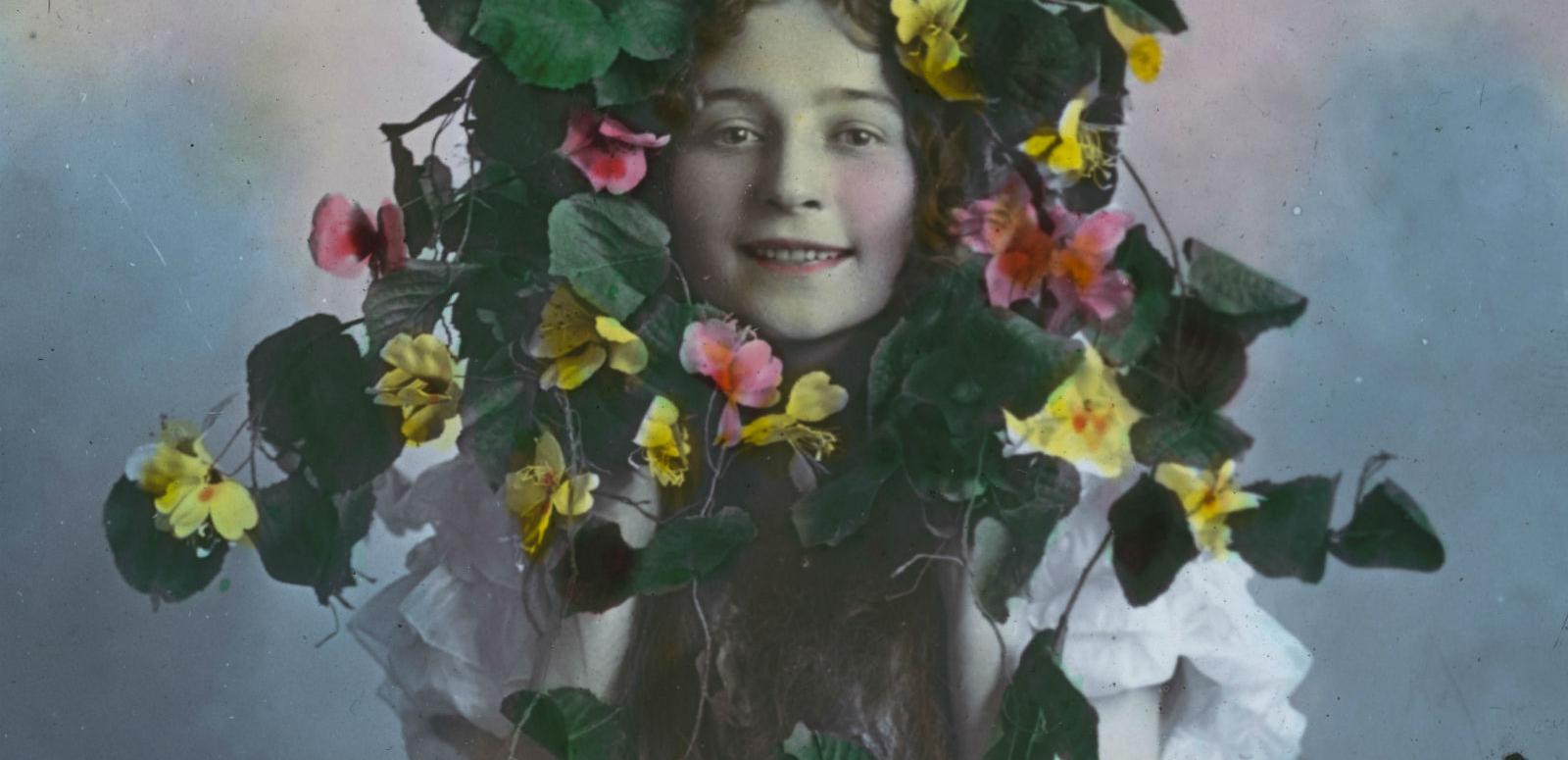
Preserving glass slides: Part 3
In 2005 the NFSA embarked on an ambitious project to digitally preserve some 10,000 glass slides in the national collection.
NFSA conservator Shingo Ishikawa and digitisation specialist Darren Weinert talk about cinema slides and their history, manufacture and preservation.
This is the third part in a three-part series. Read Part one and Part two.
Digital preservation of glass slides
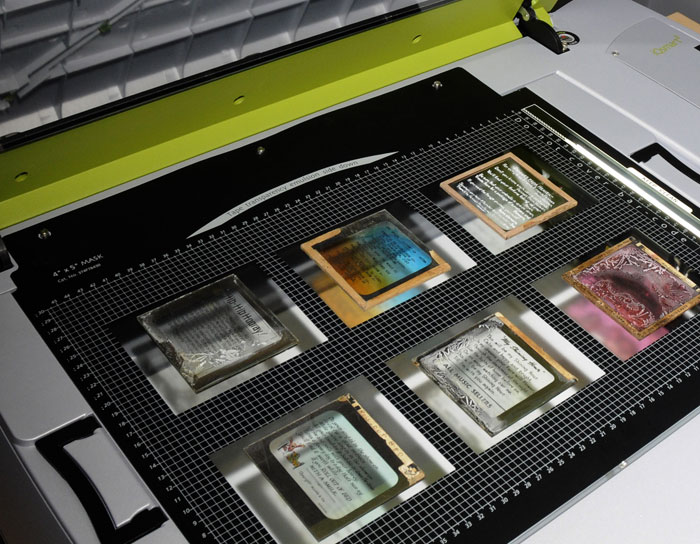
The NFSA is committed to making the collection more accessible to the public. Glass cinema slides are an important and popular part of the collection. However, repeated handling increases the risk of damage to these intrinsically fragile objects. Digitisation enables the NFSA to make glass slides available for viewing online to everyone, while at the same time reducing the need for retrieval and handling of the original item.
The digitisation of cinema slides is carried out at the NFSA on a Kodak iQsmart 2 flatbed scanner, using oXYgen Scan software.
The table below outlines the technical standards the NFSA uses for the digitisation of cinema slides:
Digitisation standards table
| Preservation file | Distribution file | Browse/Access file |
|---|---|---|
| Image bit depth: 16 bit | Image bit depth: 8 bit | Image bit depth: 8 bit |
| Colour space: Adobe-RGB (1998) | Colour space: Adobe-RGB (1998) | Colour space: Adobe-RGB (1998) |
| Resolution: 1500ppi | Resolution: 1500ppi | Resolution: 72ppi |
| File type: tiff | File type: tiff | File type: jpeg |
| File size: 142.97MB | File size: 71.5MB | File size: 41.4KB |
| File dimensions: 5004 × 4992 pixels | File dimensions: 5004 × 4992 pixels | File dimensions: 640 × 640 pixels |
There are several issues that require consideration when selecting a scanner and software. The condition of each slide will also have an impact on the way scanning is performed.
Cinema slides have depth – the emulsion sits at least the thickness of a base or cover glass away from the point of focus of a flatbed scanner. Some flatbed scanners do not have a sufficient depth of field to effectively capture the glass slide image. This is particularly obvious when the slide has the emulsion on one side of the glass and hand-colouring on the other or when the slide is actually two glass plates combined. Depth of field issues, as in the example below, can also be encountered when curved or warped glass plates will not lie flat on the scanner.
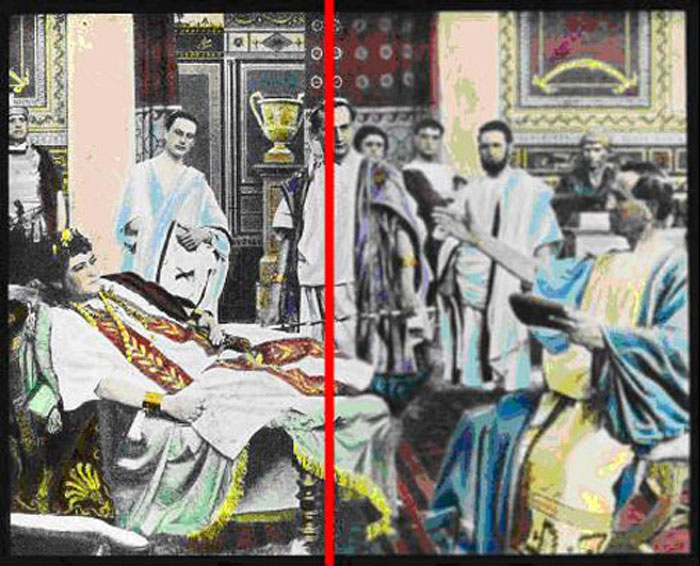
When the glass of the slide is in direct contact with the scanner glass, Newton’s rings are likely to form on the surface, as in the example below. Newton’s rings occur when light is reflected between the glass plate and scanner surface. The only way to eliminate this is by moving the two surfaces apart or by using anti-Newton’s ring glass on the scanner. To separate the two surfaces a simple thin card matte can be used. However, this may introduce further depth of field issues and a close inspection of the resulting scan is required to determine whether the slide image is in critical focus.
Glass slides are often hand coloured and the dyes will almost certainly have different peak absorbance and transmission characteristics to the photographic dyes found in chromogenic colour processes. Scanners may be optimised for capturing the critical colour fidelity of colour photographic emulsions. Correcting the scanned image to accurately reproduce the correct colour and vibrancy can be complex.
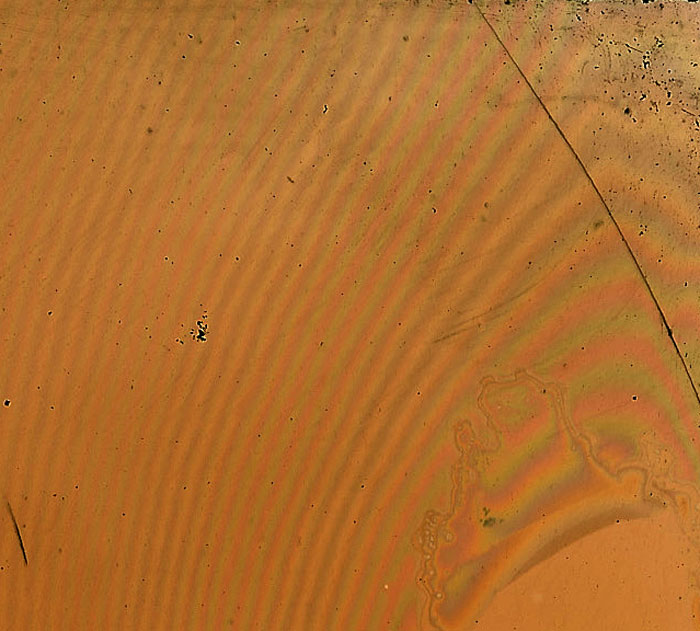
Because the slides are designed to be viewed via projection, we first scan them as transparencies. However, this process will not record text that is written on the covered edges, such as the manufacturer’s details. To record this digitally another scan is made with the scanner in reflective mode.
Some cinema slides were created using printed dot screens. When scanned, these screens can interfere with the scanner sampling frequency, creating unwanted textures, or moiré patterns in the duplicate (see example below). To eliminate moiré patterns the slide is scanned at a slight angle to disrupt the relationship between the inherent image pattern and the scanner sampling frequency.
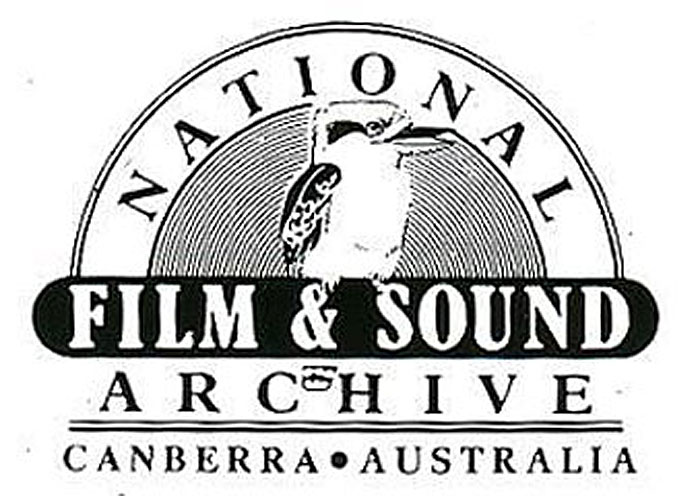
Condition may also affect the way the glass slide is digitised. For example, a crack in the glass may scan better length ways than across the scanning head. Determining the best scanning angle can be a matter of trial and error. Angled scans can be corrected to a normal viewing alignment in the final file by rotating the image during post-processing.
Glass slides are digitised with any defects that cannot be easily removed in the conservation process, such as crystal patterns that form as deterioration by-products of the slide. This digital copy can be used at a later date to ascertain whether the slide is in a stable condition or any further damage has occurred. Scans are also made when further conservation is undertaken, to document the ‘before and after’ condition.
Scanner settings will depend on the end product. If a large poster is to be produced from the digital file, the scanning operator needs to know the final poster size in order to calculate the correct output file size. Calculating these requirements involves a simple mathematical formula. To set the largest size that may be printed from the distribution file, divide the pixel size of the image by the printing resolution required, for example: 5004 pixels / 300 ppi = 16.68 inches. The digitisation standards table can be used to determine output sizes.
Because cinema slides are fragile, handling and scanning is undertaken by staff trained in working with fragile objects. Gloves are worn and steps are taken to ensure safe storage of the slides.
Packaging for long-term storage and access
Digitisation of slide images provides a preservation copy, as well as access copies for research and online viewing. However, the primary preservation strategy is controlled environment storage, which ensures that the original object is available for the maximum length of time into the future.
The NFSA’s storage strategy includes appropriate enclosures. Before entering long-term storage each slide is individually placed in a four-flap folder made from photo-safe archival quality paper. The folders are then placed inside a polypropylene archival sleeve with the label attached. The standard-sized slides are stored vertically in metal drawers with dividers. Unique-sized glass slides or special collection materials, such as Soldiers of the Cross, are stored in custom-made boxes that provide extra buffering from the external environment.
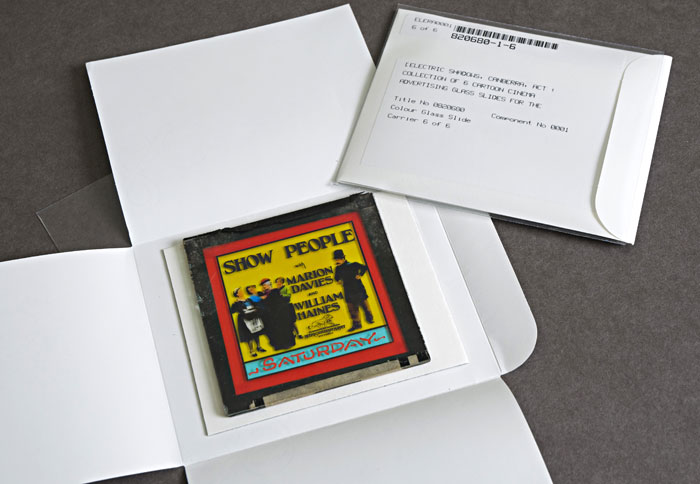
Glass slides that require special attention, such as those with lifting emulsion layers, are stored in custom-made boxes to prevent further damage from occurring during handling.
The accessioned glass slides are stored in the same controlled environment as the rest of the document collection. The temperature and relative humidity are set at 18 degrees Celsius (± 2 degrees Celsius) and 40 per cent RH (± 5 per cent). These conditions are at the top end of, but still within, the range recommended for glass plate negatives by ISO 18918: Imaging materials – Processed photographic plates – Storage practices . Stability in environmental conditions is important for photographic emulsions on glass. Consequently, temperatures in the NFSA storage vaults rarely fluctuate, even within the full deflection of the set point range.
Conclusion
The NFSA’s glass slide project is ensuring that over 10,000 historically significant slides in our collection are preserved under controlled conditions for future generations.
As work progresses on digital preservation, copies of these slides are uploaded to our online collection database, providing virtual visitors across the globe with access to Australia’s audiovisual heritage.
This is the third part in a three-part series. Read Part one and Part two.
A version of this article was presented at the Australian Institute for the Conservation of Cultural Material (AICCM) conference in Melbourne, in 2010.
The National Film and Sound Archive of Australia acknowledges Australia’s Aboriginal and Torres Strait Islander peoples as the Traditional Custodians of the land on which we work and live and gives respect to their Elders both past and present.